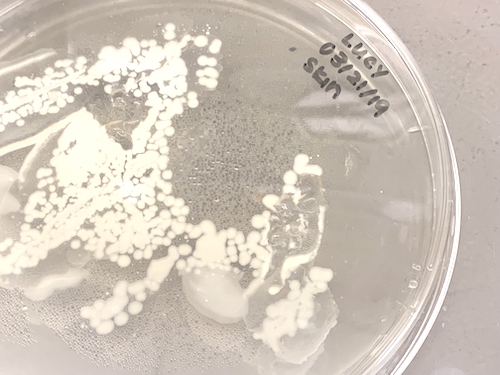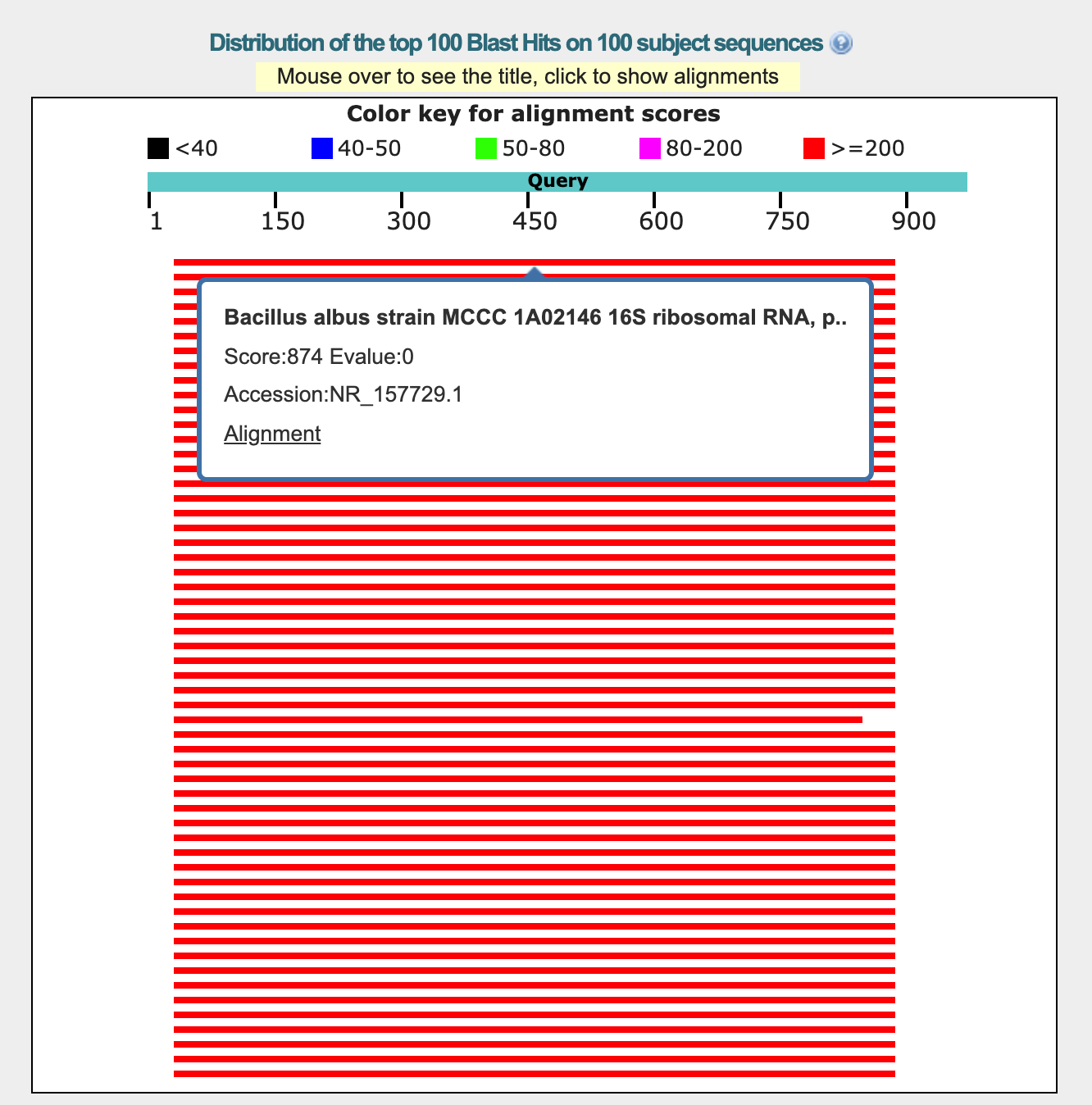
The first part of the wetlab was to isolate each a colony from our skin and mouth to send to Genewiz for 16s rrna sequencing. The procedure is basically to use cotton swabs to transfer mouth and skin microbiome onto LB agar plates and incubate at 37 degree overnight, and then each take an individual colony to two separate mini agar plates.
The results came back from Genewiz, and these are the blasting results from the online BLAST tool (for oral data)

The highest matching was Bacillus albus strain MCCC 1A02146, a rod shape bacteria in the Bacillus cereus group (?). It's strange because the same strain was very up on the top of the least for the information gathered from my hands ( The top match was Bacillus paramycoides strain MCCC 1A04098 while the Bacillus albus strain still had a 77% match ).

and then it was the microfluidics part of the assignment.


The second part of the wet lab consisted of making our own DIY tape based microfluidic device to confine bacteria and image them using a microscope.
The procedure involves:
1. taking one of the petridishes with cured PDMS and laser-cut double sided tape
2. Use a pen knife to cut a slab of PDMS of the size of laser-cut tape.
3. Use tweezers to peel off one side of the tape and adhere the exposed side to the PDMS slab. Press hard enough to make sure the tape surface is flat.
4. Remove excess tape if there is any.
5. Make holes through the PDMS by punching the inlets and outlet of the lasercut tape using a biopsy puncher.
6. Make sure the hole is not clogged with any debris of PDMS.
7. Peel off the other side of the tape and adhere it to the coverslip or glass slide.
8. Cut three lengths of tubing at an angle (arbitrary) and length of 5cm-10cm each. Insert the tubing using tweezers in the inlets and outlet.
9. Place the device under a microscope, use a double sided tape to lock it in a place and adjust your magnification (40x objective or 60x objective) to see the microchannel.
10. Use two syringes to inject cell culture into the inlet tubing.
Homework Questions
1. For four types of interventions in the gut microbiome, (i) probiotics; (ii) fecal matter transplant; (iii)… (iv), describe what are the advantages or disadvantages of each approach.
* Probiotics are generally positive, with the ability to lower blood pressure, immunity, etc. However, the negative risks may be greater in immunocompromised people. There’s not enough solid evidence to recommend their widespread use.
* Fecal Transplant are highly effective and the procedural pipeline (*heh*) is very well established. The existing issue is the complexity of matter being introduced to the system and there may be issues unknown associated with the donor. Also it can sometimes be a hard-to-accept way of puzzle solving due to the context associated with it.
* Drug use involves administration of antibiotics. It is currently the most accessible way of treating illness, yet the problem of broad‐spectrum antibiotics diminishes beneficial microbes and development of antibiotic resistance are both disadvantages of this method.
* Signaling molecules (Administration of SCFAs, LED209, tempol, AI‐2, CAI‐1 18, 19, 26, 49-53, 61) are a bit more complicated. It aims to treat or prevent disorders and diseases via interact with a target cell as a ligand to cell surface receptors in the gut microbiome. It has promising prospects in therapeutics, although there are currently not enough clinical trials to prove its efficacy. It alter microbiome by modulating immune system or interfering communication between microbe, which could potentially be rather risky.
2. One future application of engineering the gut microbiome is human augmentation. Because the microbiome has been shown to have an impact on so many aspects of human health and development, (i) propose a type of human augmentation (e.g., extended alertness for sustained periods of time, reduced stress) and (ii) describe how a microbial intervention might produce that augmentation.
One potentially very direct way of human augmentation is regarding the possibility of adjusting taste. Would it be possible to transfer one's microbiome to another person so the receiver can experience a similar kind of taste (especially associating with cultural-specific ingredients). The question in this case is, can transferring microbiota data alter one's sensory system as to immune system?